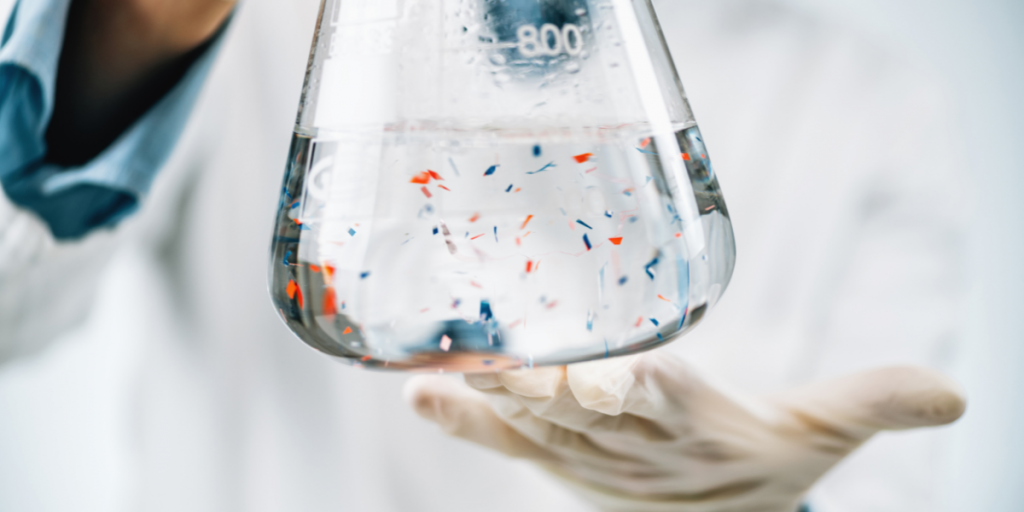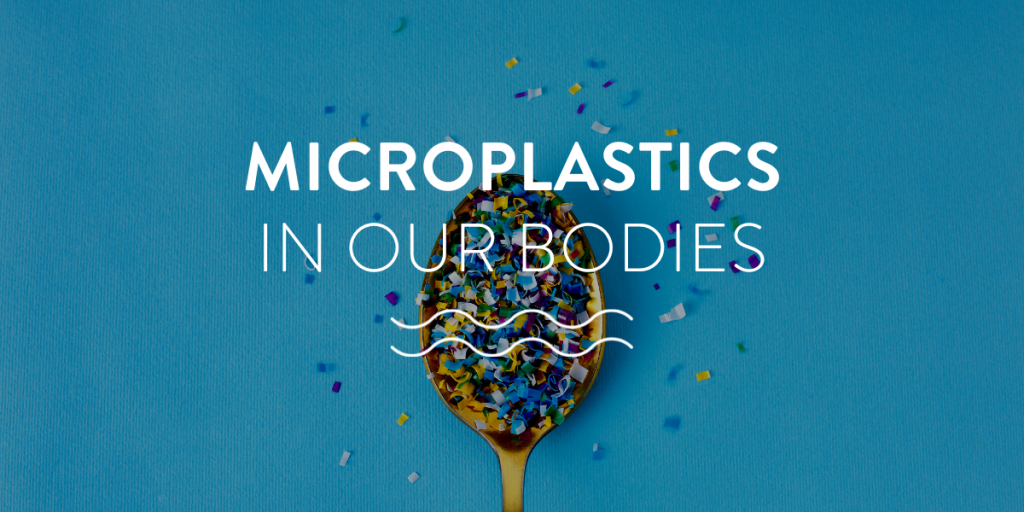The Plastic Problem
2022 has been a big year for plastics. In March, scientists found that 80% of people tested had some type of microplastic in their bloodstream. Despite a small sample size, this is the first scientific proof of plastic particles in human blood.
In April, 11 out of 13 patients undergoing lung surgery tested positive for polypropylene, the chemical found in plastic packaging and pipes, or PET, used in bottles. This marked the first time that microplastics were found in the lungs of living patients.
We knew before these findings were released that microplastics might be infiltrating our bodies–
one study in 2021 found that 100% of women contained plastic chemicals in their breastmilk.
As microplastic chemicals had already been found in human fecal and urine samples, researchers have several ideas as to where these plastics might be entering the bloodstream; via the air, food, water, cosmetic products like toothpaste and makeup, or the plastic products we use daily. Ocean plastic pollution has been a serious challenge for some time now, as a vast majority of sea creatures, fish, and seafood products are affected by the contamination.
Because a method of detecting microplastic in the blood was only just now developed, no published study has investigated the impact of these plastics on our organs or overall health. It’s no secret now that plastic contamination is occurring in our oceans, our lands, and on a microscopic level in our bodies.

The Great Microplastic Illusion
The gravity of these studies feels profound. Too close to home, influencing the bodies we inhabit, how could we have let the pollution problem get “this bad”?
Yet, I realize that this shock was born from an illusion I had been trained to believe: the idea that we are separate from nature.
For hundreds of years, humans have made decisions that separated us further and further from the natural world. We built our homes and created our lives away from nature, detached from forests, disconnected from animals, distinct from all things green, growing, and alive.
Proof of microplastic in our blood, in our lungs, in our breast milk, is proof of an undeniable truth we have been denying year after year– we are nature. We are animals part of the ecosystem as it lives and breathes. And denying this truth in our everyday lives is causing us great damage. The plastic pollution we create isn’t just hurting creatures in some far-off place, deep in the ocean, or living in the jungle. It’s hurting ourselves, too.
Plastics harm the environment. They harm nature. And we are a part of nature. Indigenous communities have been championing this principle for centuries, forming sustainable communities harmonious with natural cycles and their native environment. The sustainability movement is not really something new that has emerged in the last century. It is a way of life that indigenous peoples have been embodying in their practices for eons.
A return to this interconnected understanding of our place in the world is sure to lead to significant sustainable change in terms of the plastics we create and consume– and we can look to indigenous leaders for a place to start.

Time to Act!
These studies, heralded as new insights into the scope of our microplastic problem, are hopefully spurring important shifts in our plastic usage. However, the idea that the chemicals in plastic damage living things we have known for some time know.
This was the second illusion I was under: that the problem is only now “this bad” just because it is impacting human bodies! We know that garbage dumps and landfills pose threats to human life from toxic leaching and dangerous scavenging activities. Even the production of plastic is horrendous! Plastics have been hurting ocean ecosystems, waterways, and natural habitats for years, and the Earth has been calling out for solutions.
While scientists don’t yet understand the impact of microplastics in our bloodstreams, these findings beg the question: how much more proof do we need before we make serious societal change?
Learn more about microplastics in our blog Why you should care about microplastics.
Or check out a special kind of microplastic, microfibers, in our blog The Problem With Microfibres.


